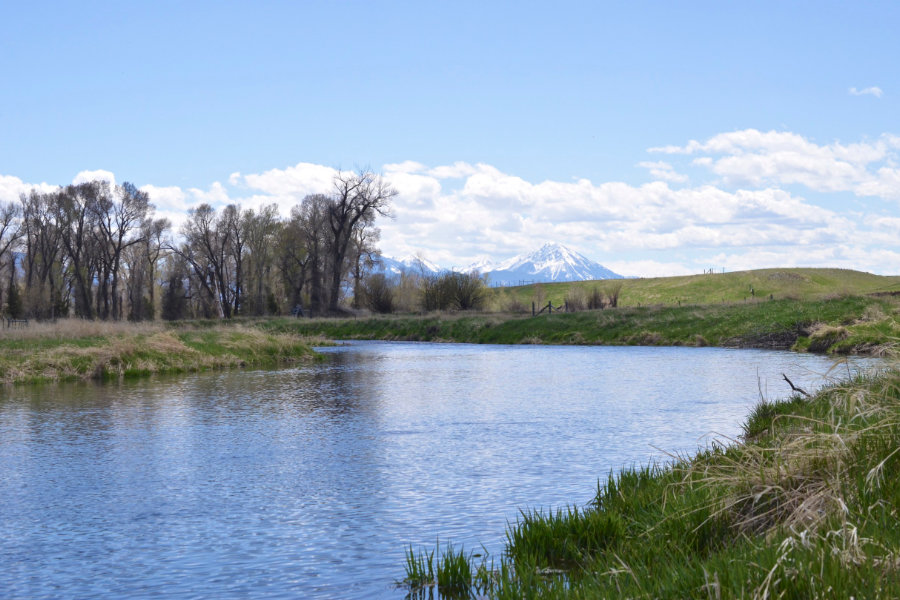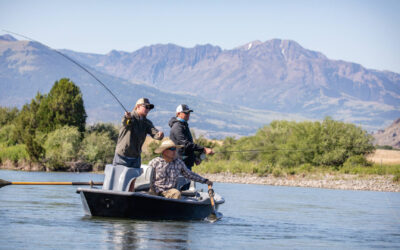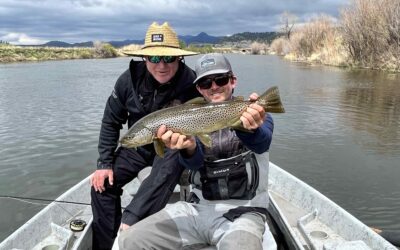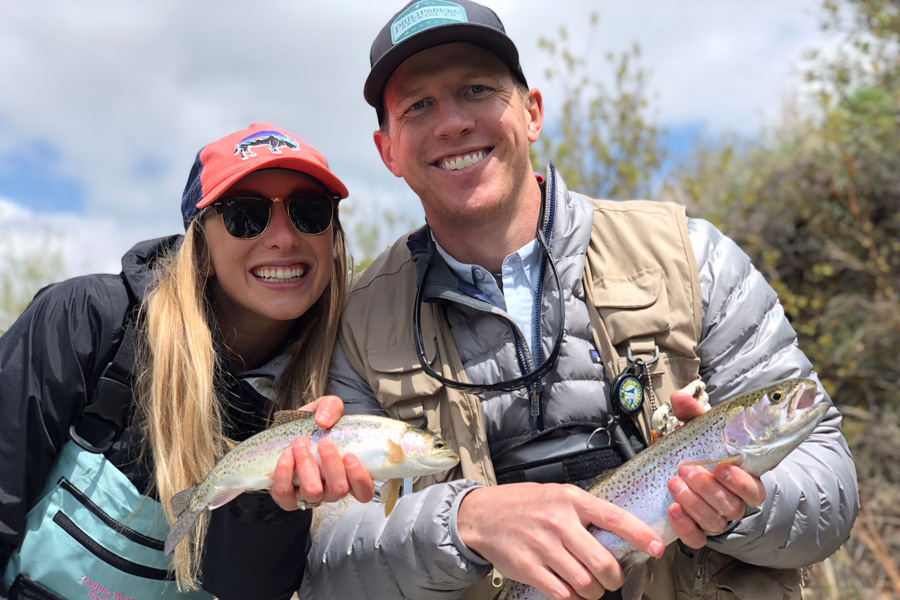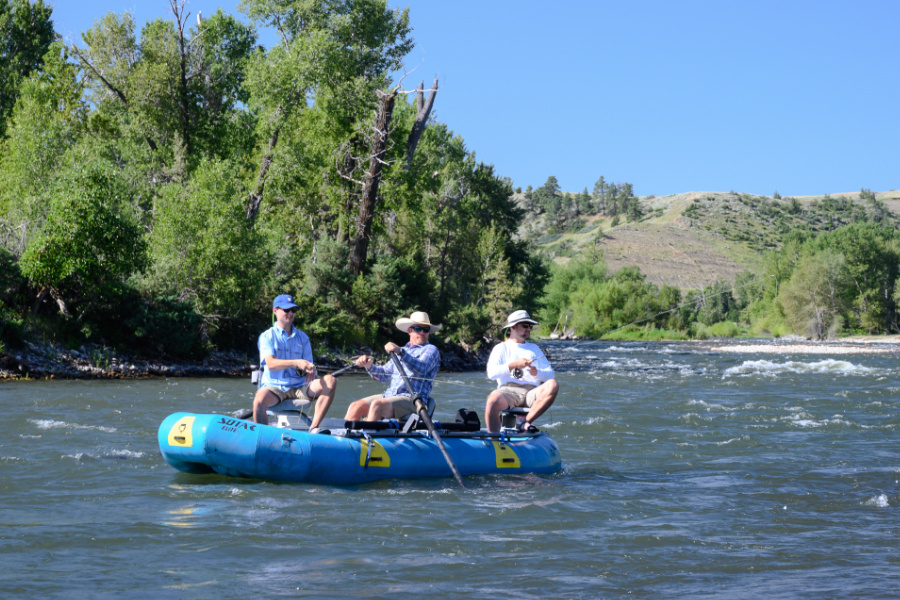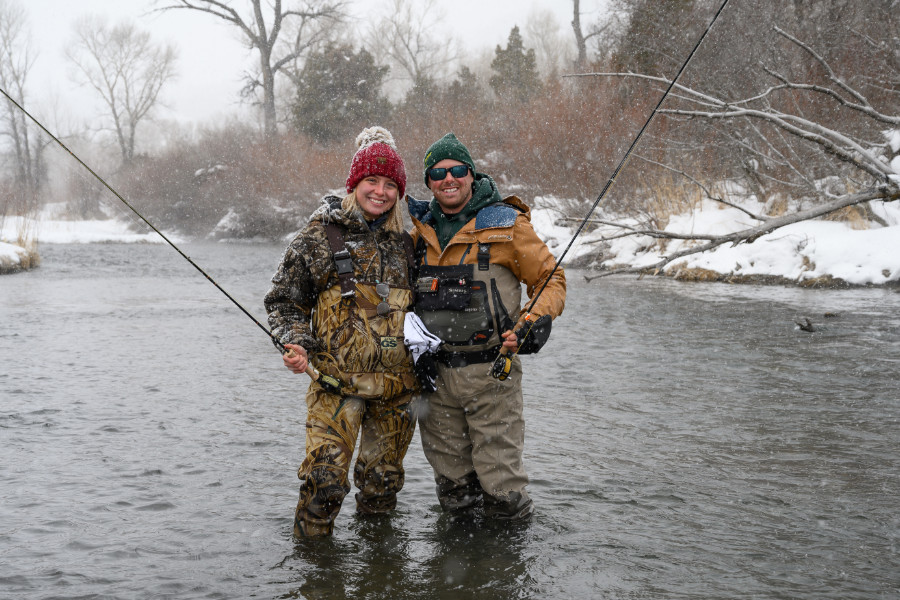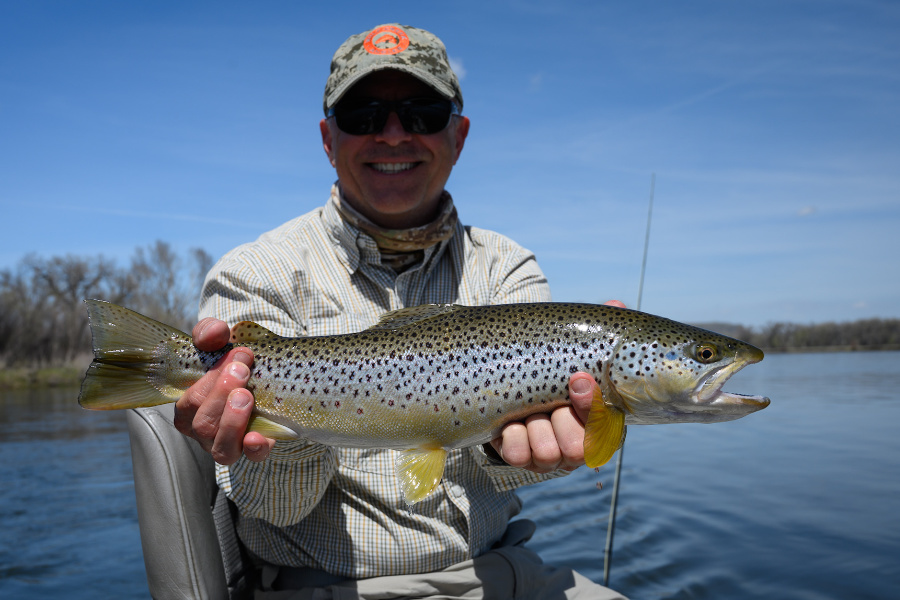Skills for Fly Fishing the Paradise Valley Spring Creeks
Montana Spring Creek Fly Fishing offers technical fly fishing to challenge even the most accomplished of anglers. DePuy’s Spring Creek, Armstrong’s Spring Creek, and Nelson’s Spring Creek are all world famous fisheries in Paradise Valley, a short drive from our home base of Bozeman, Montana. We’ve learned a lot during our time on the water guiding anglers and fishing for the spooky and selective trout in these creeks and have compiled a basic guide to Montana Spring Creek success. While this guide is catered to fly fishing the Paradise Valley Spring Creeks, consider applying these tactics and lessons to any technical water you find yourself on.
1. Patience Pays
Nothing happens fast on a Spring Creek. As anglers we benefit when we slow down, observe, and think before we fish. When I arrive at a spring creek I park my truck, put on my waders, and take a walk down the bank at a distance of representative water before I ever even think about rigging a rod. I spend many days every year guiding these water and know the hatches well, but every day is different. This walk lets me look at the bugs or lack there of, see the number of fish rising, assess where other anglers are, and determine what rigging will be most appropriate to start the days fishing. Some days I go straight to dry fly fishing if bugs are actively emerging, spinners are falling, or fish are actively rising for adult duns. Other days where the creek is quiet, I opt for nymphing. Slowing down and spending the time to watch the water before you hop in will allow you to better take advantage of your fishing time. Think twice, rig once.
2. Dare to Downsize
Generally speaking I have always thought too much emphasis gets put on fly selection over presentation. How you fish a fly is more important than what fly you are fishing. Spring Creek fishing is different. Your fly selection counts and lots can go into this: size, bug type, stage of life, color, weight, and flash. Thats right, size matters, and when it comes to Spring Creek fly fishing, our guides will be the first to say that when in doubt, go small.
Small food is safe food to spring creek trout. During any hatch you will encounter a size range of naturals. With BWOs this may be 16-22, with PMDs this may be 12-18, and with Sulphurs this may be 20-24. Fishing fly patterns at the smaller end of the spectrum will produce more takes over the course of a day. They may be tougher to see, not float as well, and smaller hooks can be tough to set well, but well worth the hassle. If you get a bump or refusal on a larger pattern, consider immediately downsizing. Don’t wait for multiple refusals. Dare to downsize the first time.
3. Rig For Success
Rigging for spring creek fly fishing is just as important as a good cast and mend. A few quick tips: opt for 6x tippet, 12+ foot dry fly leaders, small pinch-on indicators, and trim your tag end tights. Now for the nitty gritty.
Good rigging starts with your choice of rod and reel. 3wt and 4wt rods allow for more delicate presentations and protect lighter tippets well. Leave the 6wt at home. While you don’t need a large amount of backing on your reel, a smooth drag is necessary for our big, mean, and strong spring creek trout. They like to run, jump, pull, and do anything they can to pop your tippet. Set your drag light, just enough that you won’t backspool your line. Or opt for a click-pawl drag reel. Smooth as can be and you can’t beat the classic sound.
Leader construction is the next consideration when rigging for spring creek fishing. We use long tapered fine leaders for both dryfly and nymph fishing. A long tapered butt section that gradually fines to 6x is preferred. This allows for great fly turnover even at distance. Your fly line will spook fish while clear mono, even thick, won’t. My dryfly leaders are generally 15ft from the end of the fly line to fly. This allows for easy mending and keeps lots of distance between your fly line and your fish. For upstream presentations don’t be afraid to go longer. For nymphing, maybe a bit shorter. Generally speaking your leader can be shorter in faster water but longer in slower. Don’t skimp out on knots. Learn the blood knot and use it. Fine tippets need all the strength they can get. There are lots of ways to lose big fish, don’t let a double surgeon’s knot failing be one of them.
4. Match the Hatch
The best spring creek anglers are students of the creek. They study the bugs, can identify size, species, color, and most importantly the stage of life of the predominantly hatching insects. Tying on a sz 20 parachute adams during a BWO or midge hatch may fool a fish every one in a while, but to consistently fool spring creek trout you’ve got to match the hatch. Aquatic insects hatch in a predictable pattern: the emerge, fly, and ultimately fall. The savvy spring creek angler fishes emerger patterns during an emergence, cripples and duns when the fish key in on adults, and spinner patterns during the fall. Montana spring creek fish key in on the various stages of life and will leave the parachute adams angler scratching their heads most days. Learn the bugs and match the hatch for consistent spring creek dry fly success.
5. Make Your First Cast Count
Spring creek fish are picky and unforgiving before you even step in the creek and get even pickier with every successive cast over them. Before you ever start your cast, think about making your first cast your best cast. Make it count. Pick a target, a steadily rising fish is a good bet. Watch it and learn its pattern. Is it moving? Is it stationary? What bugs are it eating? Good questions to ask. When possible it is best to position yourself just upstream of the fish, 30-35ft across. Think about leading your fish by 3-4ft. Anymore and your drift will likely drag. Reach cast or mend quickly. Just make sure your drift is drag free. If your cast is true and your fish cooperates, watch it eat and then set the hook. It is easy to set too fast. Watch it eat. Then set the hook. If it passes on your offering don’t re-cast until your fly is well below your target, or pull it in, reset, and make your second cast count. I’ve seen plenty of fish caught on casts 15-20 but many more spooked on casts 2-5. Make your first cast count and you won’t have to worry about the second.
6. Practice Makes Perfect
Spring creek fly fishing puts anglers into technical situations they may not be familiar with. Reach casts, turning over long leaders, and perfect dead drifts don’t come easily. Try and incorporate these techniques and methods into your other, more forgiving, trout fishing environments. Fish a 15 foot leader on a freestone river with eager trout, see if you can dead drift across swirly currents in back eddies, and fish 6x just to practice your hook sets and soft touch. The reach cast can be mastered in your backyard. Putting in the time practicing these techniques will pay off when you are up against PhD spring creek trout. Every great spring creek angler struggled before they succeeded. Get the struggling out of the way before you step into the creek. Practice to make perfect.
